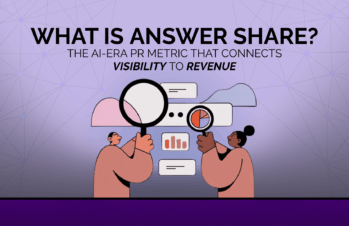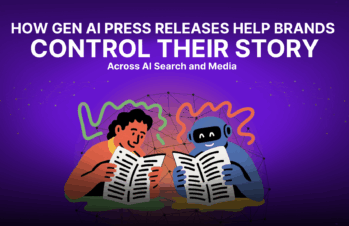“Signaling” is everywhere: in our online behavior, the cars we drive, the groups we align ourselves with, the brands we wear and use.
So what is signaling?
Signaling is a type of behavior used primarily to indicate, or “signal,” our status or value.
Wearing an Armani suit to an interview conveys status and power to the people who are interviewing you.
Bringing organic-only snacks to your child’s school signals that you’re health- and environmentally conscious.
Such behavior doesn’t mean that you care solely about the signal you’re sending—after all, you probably do care about the health benefits of organic. Likewise, Armani suits do fit and look better than ones by lower-end designers. But you can’t get away from the fact that doing these things also sends a message that you are a part of a particular group of people who believe or behave the same way you do, which in itself conveys a particular status.
Let’s look closer at signaling theory and how it plays into B2B marketing.
How does signaling theory affect marketing?
Signaling theory is integral to marketing and advertising, even though it’s more often thought about in B2C.
In B2C, it’s straightforward to see how signaling plays out. Think of a luxury product, like a Land Rover. The marketing and advertising for Land Rovers always show attractive people driving through beautiful, exotic scenery, signaling not just escape and adventure, but the fact that those people have the money and time to get away whenever they want to.
The same is true of B2C fashion brands or kitchen appliances.
In B2B, signaling theory is slightly less noticeable because the products and services B2B brands are selling usually aren’t visible. You can’t know that your competitor uses Salesforce or Sharpspring unless you ask, after all. That means that B2B brands marketing their products can’t rely as much on the signaling behavior of clients to increase their brand’s reputation.
How can B2B brands use signaling theory to their advantage?
For B2B, signaling theory comes down to how the brand presents itself, from their site design to the events they sponsor to the websites they advertise on.
So, for example, a B2B brand might purchase a considerable number of PPC ads on a cheap website. This seems like a reasonable, cost-effective decision because their budget will go further in terms of the number of placements.
However, it’s easy for users to tell which ads are cheap and expensive—they know through intuition, as the scientifically-backed theory of “costly signaling” tells us. And seeing a clearly expensive ad gives the viewer confidence in the product, even if the ad doesn’t have a clear message. If an ad is obviously expensive, the brand must have lots of money to spend on advertising (a good sign), and they must believe their product is worth it (also a good sign).
This is part of why so many brands, both B2C and B2B, try to get celebrity endorsements because everyone knows that celebrity is being paid a lot of money to endorse that brand.
What does this look like in action? Well, one colossal brand, JPMorgan Chase, went from having ads on 400,000 websites to only 5,000 in a matter of weeks.
They made the change because they didn’t want their advertisements showing up on fake news or clickbait sites—that not only cheapened their brand reputation but also made them appear as if they endorse those websites. And no adverse effects in terms of performance appeared after making that vast reduction.
Signaling doesn’t only apply to cheap versus expensive, though. B2B brands can put this knowledge to work in other ways as well:
- Social purpose and corporate responsibility. Make sure any causes you support are authentically in line with your brand. It’s easy to end up signaling that your brand only cares about the PR boost of supporting a cause rather than making a real change. Remember all those diversity and inclusion statements that brands put out in the summer of 2020?
- Design choices. Every creative asset and design choice you make can either signal that your brand put a lot of time, effort, and thought into how it presents itself or just slapped something together. You want your design to convey value: you value what your brand puts out into the world, so potential clients should, too.
- Events. Like ad placements, clients can tell what events are expensive to sponsor or appear at and which are not. This doesn’t mean you should stretch your budget to the breaking point or always choose a more expensive event—but it does mean that if you’re choosing to participate in events, trade shows, and/or conferences because of their lower cost, you should take a good hard look to see if the benefit will actually be as great as you think.
All B2B brands are engaged in signaling—it’s unavoidable. That’s why it’s so important to be sure you’re doing it with intention. So to up your marketing game and make sure you’re signaling the right things, get in touch!




